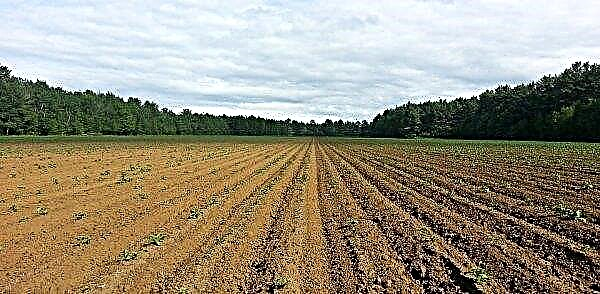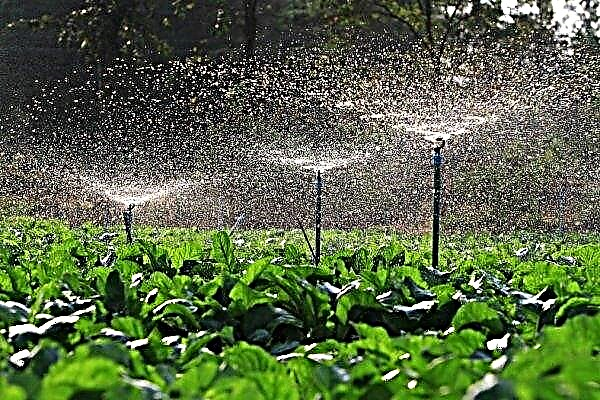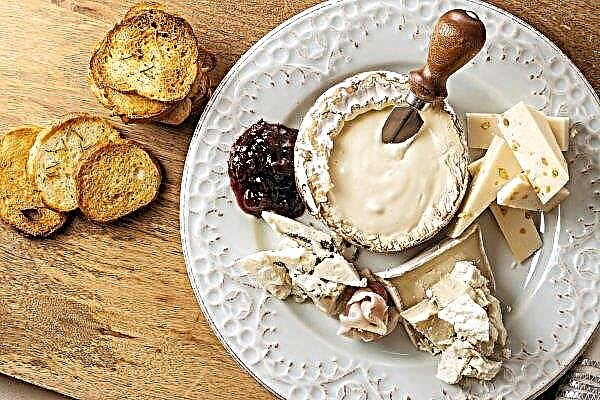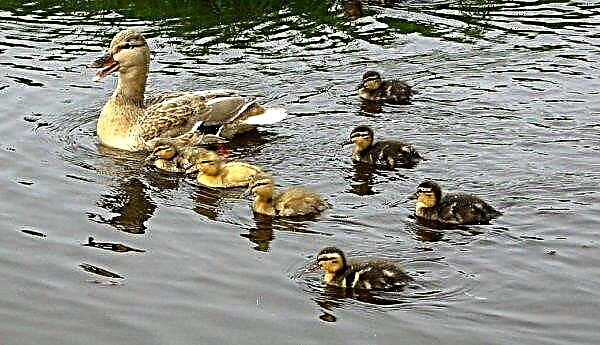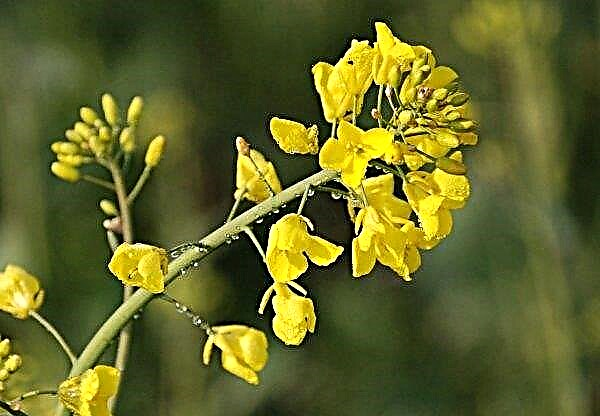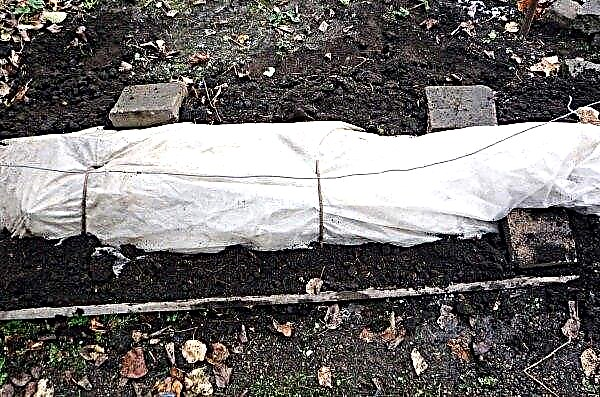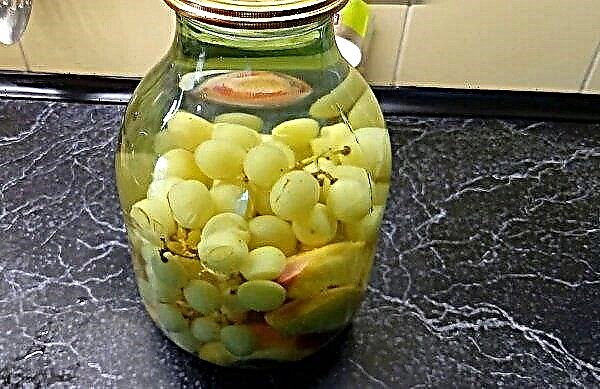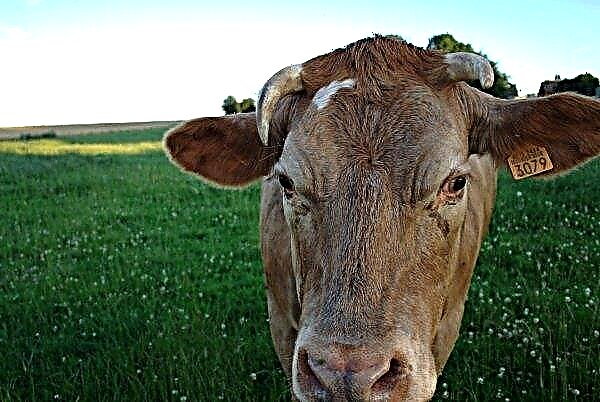Common juniper Hibernika, or Juniperus communis Hibernica, is most often used in landscape design in Russia. It was bred by Irish breeders in the middle of the XIX century. It is valued for its frost resistance, growth rate and decorative qualities.
Botanical Description
Juniper Short Description:
- size - height 4–5.5 m, diameter 1–1.3 m;
- the shape of the crown is branched, narrow, columnar, dense;
- variety - grows quickly, one of the most common forms of juniper is a blue hue, grows in width after it reaches its maximum height;
- growth rate - 15 cm in height and 5 cm in width, grows to 2 m by 10 years;
- bark - changes color with age, from red or brick to dark brown;
- branches - grow upward, straight, not sagging;
- root - deep, slightly branched;
- fruits - cones in the form of ovoid-shaped berries up to 0.7–1.2 cm; when ripe, the green color first acquires a dark blue hue;
- needles - a small, very pointed, dense gray-blue or green-blue hue;
- soil - not picky, but prefers acidic, alkaline, fresh, moist, drained soil, pH 4.5–6.5;
- insolation - grows well in lighted areas, the needles grow dull in the shade;
- relation to humidity - loves moisture, but has a high drought resistance.
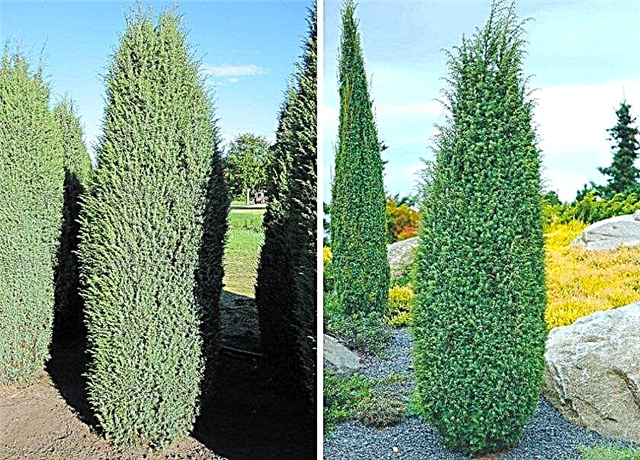
Variety Characteristics
Juniper variety was bred in 1838. His homeland is Ireland. Widely distributed since the mid-19th century throughout Western Europe. This tall bush was used in the design of parks and cemeteries. The difference between the variety is a long life span, some specimens reach 300 years.
Did you know? Junipers are widely used by modern magicians and sorcerers. Talismans from this coniferous plant bring wealth and good fortune.
The color of the crown can vary from gray-green to dark green or blue. The needles become prickly only after the vegetative period. The branches are strictly vertical, compact and thicken after the tree reaches a height of more than 4 meters.
Landing
When landing, you should pay attention to the condition of the site. It should not be swamped or heavily flooded. Despite the fact that the plant loves moisture, drainage should be carried out. An expanded clay or crushed stone layer of 15–20 cm is placed at the bottom of the recess for planting.

The Hibernica landing itself can be divided into several stages:
- Choosing a place to land.
- Preparation of planting material.
- Planting a seedling.
Important! When planting not one plant, but creating a whole grove of coniferous bushes between them, it is necessary to maintain a distance of 0.5–0.8 m.
Soil selection and preparation
Juniperus loves well-lit areas. If the platform on which it will be planted is in the shade, the branches of the plant will not normally develop, and the needles will fade.
The plant is not demanding on soil, but alkalized or salted soil is not desirable. Before planting, you should prepare the soil mixture, which must be strewed to the bottom of the pit and fall asleep seedling. Fertile soil, sand and peat should be mixed in a ratio of 1: 1: 2.
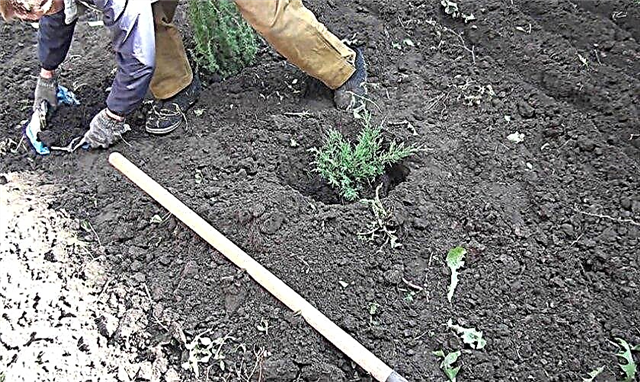
Seedling preparation
Planting stock should be carefully examined before planting. If it has broken or dry shoots and branches, they must be removed. Also, to improve the survival rate of a bush, it can be 30–40 minutes. hold in a liquid that stimulates the growth of the root system. This drug should cover the entire plant.
Detailed landing steps
Juniper planting itself can be divided into several steps:
- Dig a hole with a depth of 80 cm, the width should slightly exceed the size of the root system of the seedling.
- If necessary, drain.
- Pour a layer of soil mixture to the bottom, not more than 5 cm.
- Set the seedling in the center of the recess and fill it with the remaining mixture.
- Pour abundantly (10–12 L of water) and mulch (sawdust or wood chips 6–8 cm).
Video: Juniper planting
Care Features
When caring for Hibernica, the following must be observed:
- watering;
- top dressing;
- loosening;
- mulching;
- pruning
- winter training.
Did you know? For the first time, juniper with medicinal purpose was used in ancient Egypt. His decoctions were used to treat psoriasis, eczema, and lichen.
If you do not perform these simple steps, the plant may lose its decorative properties or become ill.
Watering and feeding
Juniper loves moisture, so you need to water it several times a month with 1 bucket of water. If the summer season turned out to be arid, then watering should be increased. To make the needles look brighter, it is necessary to arrange sprinkling 1 time in 10 days. Fertilize the plant once a year. At the end of spring, nitroammophoska (40-50 g per m²) and any complex preparation are introduced.

Mulching and cultivation
Loosen the soil around the bush immediately after watering. This should be done shallowly, by 6–8 cm. Continuous carrying out of this simple operation will allow to saturate the soil with oxygen and prevent decay of the root system.
Did you know? Juniper needles are useful and actively used in folk medicine. Tinctures and decoctions help with bacterial infections due to volatile.
Mulching is carried out in order to prevent weed grass from growing next to juniper. Mulch is best made from peat with a layer of 4-6 cm, it will not only protect the site, but will also retain moisture during drought.

Haircut and shaping
Kibernik pruning is the sanitary removal of broken or dried branches. It is carried out in the spring, before the allocation of juices with sharp garden tools. Forming pruning is not needed for this plant.
Winter preparations
In winter, young or recently transplanted Juniperus shelter. The branches of such bushes are covered with spruce branches or with a dense cloth and tightened with a rope. The root system is mulched with needles or fallen leaves 15-20 cm. Adult plants, 5 years and older, do not need shelter.
Breeding methods
Juniperus hibernica can breed:
- by seeds;
- layering;
- cuttings.
 Seeds are sown at the end of winter in a container with sand, which should be in a cool place until spring. Then the hatching material is transplanted into the greenhouse in April.
Seeds are sown at the end of winter in a container with sand, which should be in a cool place until spring. Then the hatching material is transplanted into the greenhouse in April.
Cuttings are carried out as follows:
- Cuttings from the adult tree in the spring.
- Root a branch in a greenhouse or greenhouse.
- With successful engraftment and the formation of the root system, transplant a seedling in sandy soil.
Important! To cuttings or cuttings better take root, they must be constantly sprayed with water, arranging sprinkling at least once a week.
When propagating by layering, it is necessary to choose one of the lower branches of juniper, which spreads along the earth's surface. Such an escape is crushed with a stone and slightly covered with earth. After a year, the branch releases its roots, and it can be transplanted to a new site.
Use in landscape design
Landscape designers use Hibernik as:
- tapeworm during lawn formation;
- focal plant;
- one of the elements of a group landing.
 This juniper in the shape of a crown is similar to cypress, so it is often used to create a living wall.
This juniper in the shape of a crown is similar to cypress, so it is often used to create a living wall.
Diseases and Pests
Despite the fact that this plant has strong immunity, due to a lack of lighting or an excess of moisture, it can be susceptible to various forms of fungal diseases typical of conifers. The needles of the affected juniper turn yellow, and the branches dry out. The neglected forms lead to redness and the death of the root system. To combat such ailments should be with the help of fungicidal preparations ("Bactofita" or "Vitarosa").
Of the harmful insects, Khibernik has two of the most dangerous enemies, these are:
- sawfly;
- needle tick.

These parasites destroy young needles and plant buds, slowing down growth and sucking out nutrients. You can fight them by attracting feathered helpers or by treating the Juniperus Hibernica crown with drugs such as Decis, Karbofos or Kinmiks.
Hibernik is not difficult to plant and grow, as well as provide the necessary care. This coniferous plant will look great in a single composition, and next to deciduous or spruce trees.Did you know? In ancient Russia, juniper was known for its disinfecting properties. It made dishes, containers for mushrooms, berries and vegetables.


